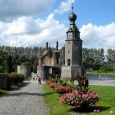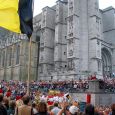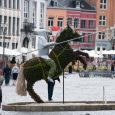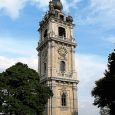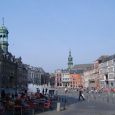Mons
Advertisement
By Air
the closest airport to Mons is Brussels Airport (IATA: BRU, ICAO: EBBR) is an international airport 6 NM (11 km; 6.9 mi) northeast of Brussels, Belgium.The airport is partially in Zaventem and partially in the Diegem area of Machelen, both located in the Flemish Region of Belgium.Brussels Airport currently consists of 54 contact gates, and a total of 109 gates. It is home to around 260 companies, together directly employing 20,000 people.In 2005, the airport was awarded Best Airport in Europe by Airports Council International/International Air Transport Association (ACI/IATA), based on a survey conducted with over 100,000 passengers worldwide.
By Train
Mons railway station opened on 19 December 1841.There are regular train links with Brussels and other major Belgian cities.Mons can be easily accessed by train from Brussels (45 to 60min), Tournai (23 to 41min), Lille (45 to 55min), Namur (1 hour) or Liege (1h45min to 2h15min).The Thalys bullet-train links Mons to Paris twice a day, although it may be more convenient to first go to Lille by ordinary train and change to a frequent French TGV from there to Paris.
By Road
Mons is on the E19 motorway (Paris-Brussels-Amsterdam), about halfway between Valenciennes and Nivelles. The N6 (N2 in France) links it to Maubeuge, 20 km south.
Ducasse de Mons
is a popular festival that happens every year during the Trinity Sunday (57 days after Easter) in the town of Mons in Belgium.It is recognized as one of the Masterpieces of the Oral and Intangible Heritage of Humanity since November 2005.The feast comprises two important parts: The procession, the descent and the uprising of the Waltrude’s Shrine.The combat of Saint George named Lumecon.The feast begins from the Saturday before Trinity Sunday to the next Sunday.As an eight-day festival with a specific liturgy, it can be called an octave.The descent of the shrine happens on the Saturday evening. During a religious ceremony, the shrine is taken down from its Altar.The Priest gives the shrine (kept all the year in the collegiate) to the town authorities for the duration of the feast. After this moment, a procession with torches begins in the streets of the town.After one week of festivities, the authorities of the town give back the shrine to the priest of the collegiate.The shrine is replaced on its Altar, which is why it is called the ascent of the shrine.
Belfort tower
is a medieval watchtower with a tocsin.More generally with belfry an urban tower in the Southern Netherlands indicated, when the city bells were hung, and that often or for a town hall or commercial cloth hall was built.A group of 56 belfries in Belgium and France are included in the UNESCO World Heritage List.In the Middle Ages, the trade and (cloth) industry flourishes in northwestern Europe.This was the bourgeoisie in the urban rich and increased their influence.Belfries were a symbol of this city and civic freedom and power.Previously had in fact only the princes and the church the money to finance such large buildings.The belfry was, as the safest place in the city, often home to the city archives, vaults and sometimes the city jail.Because of the height of the bell tower was also used as a lookout for enemies in time to see it coming to town and quickly fires can be detected.The town clock was then sound. Other features of the town clock were: indicate when the gates were opened and closed, read at the beginning and end of the workday and Bavaria on the occasion of festivities.From the 16th century, carillons in fashion.
Saint Waltrude's Collegiate Church
Although located in the heart of the old County of Hainaut, Saint Waltrude's Collegiate Church (collégiale Sainte-Waudru in French) is one of the most characteristic churches and most homogeneous of Brabantine Gothic architecture.The collegiate was built in the fifteenth century on the orders of canons. Along with the nearby belfry it is considered as a major symbol of the city of Mons. It contains many works of Jacques Du Brœucq.It is made of local materials like sandstone, blue stone and brick It is designed in a classic form which is expressed by a Latin cross sign.It measures 115 metres long, 32 metres wide and rises to 24.5 metres at the keystone. The chancel is surrounded by an ambulatory and 15 chapels.
Waux Hall
Waux Hall park was built in the nineteenth century (1862 - 1864) at the initiative of the Society of Waux Hall created for this purpose by members of the bourgeoisie.It is therefore the source of a private park. It is located at the site of Fort said that the Dutch formed an outwork the last fortification (1815-1864).Remnants of the fort still exist under the current pavillon.The gardens were designed by Louis Fuchs and the central pavilion was built by architect Joseph Hubert in tavern style.The Turkish hezel is one of the remarkable trees in the park. A 5 hectare landscaped park was built in mid 19th century and consists of age-old trees, water features, lakes and lawns.Various memorials and outdoor sculptures, including works of sculptors Grard, Deville, Hupet and Guilmot Harvent, are placed.The park also contains various species of age-old trees.
Valenciennois tower
This is the last existing trace of the medieval walls surrounding the city.This defensive structure built of sandstone of Bray was built around 1358.Its walls equipped with loopholes have a thickness of up to 4 meters.The tower has lost about a third of its original size.A project to install a terrace on its top open to the public just been completed in 2009.The tower has housed within it a sound installation in the festival of contemporary art audio-visual CitySonics when it reopened.
October - February
April - July


